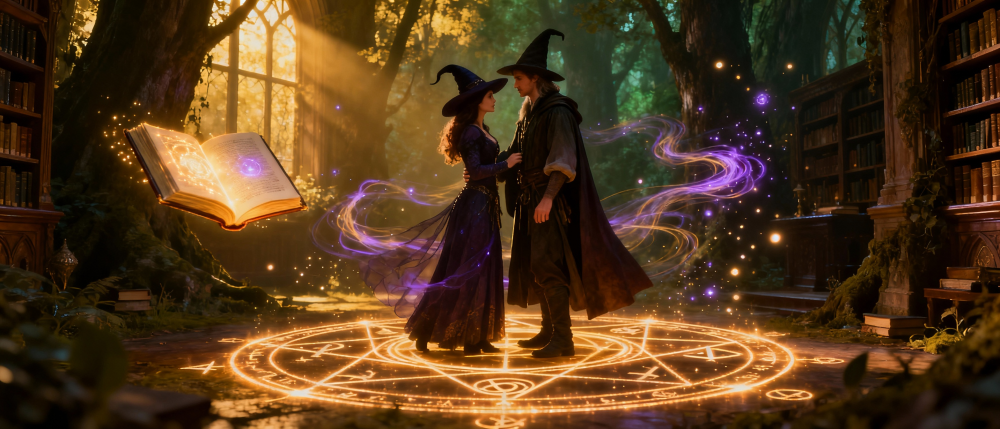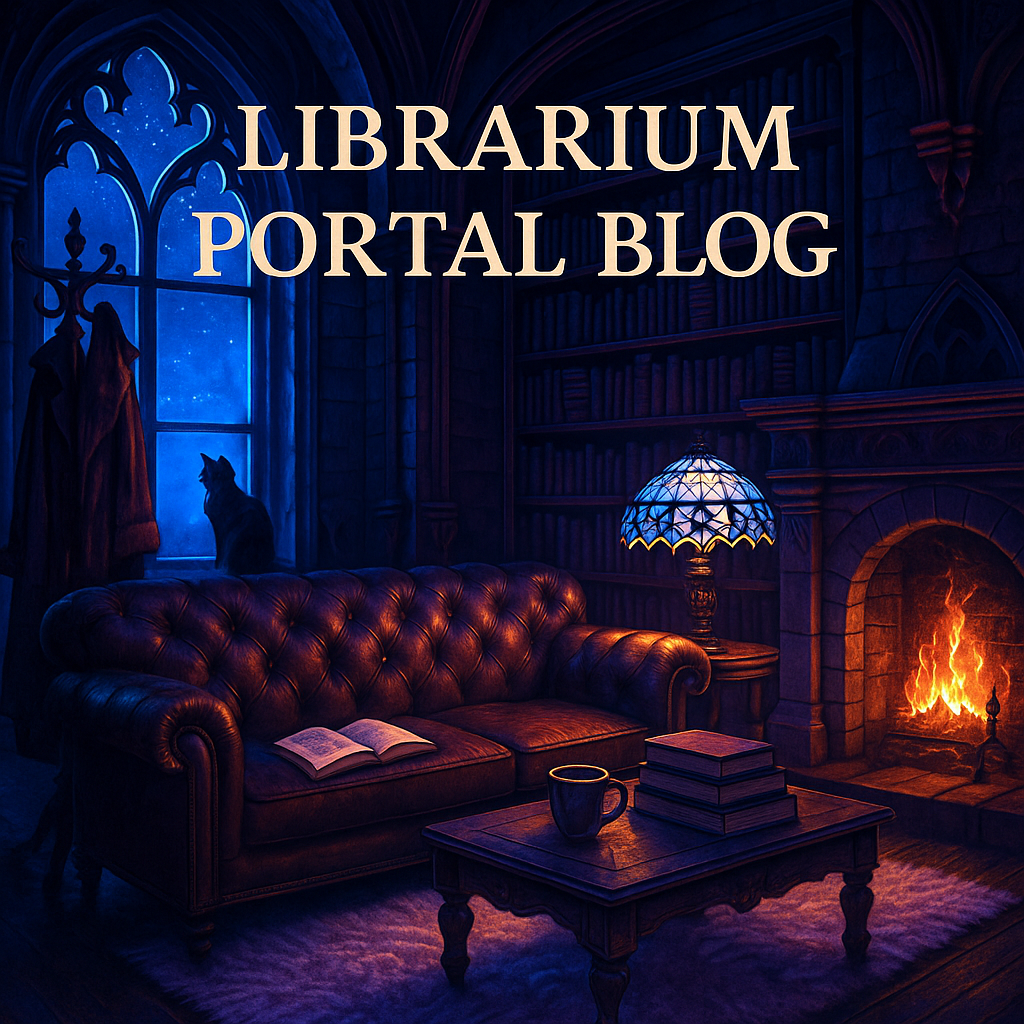
Witches and wizards have always added a special spark to fantasy romance. The mix of everyday relationships with magical powers and fantastical dangers creates some of my favorite stories. Blending romance with spellcraft lets characters fall in love while also battling curses or magical politics, raising the stakes beyond what you’d find in a regular romantic plot.
Many readers, myself included, are drawn to these stories because they offer both escapism and a way to explore power and vulnerability through characters who can shape reality. When you add in a brewing love story, you get a recipe for something unique and unforgettable. Beyond that, fantasy romance with witches and wizards gives readers a setting to witness how personal growth and the exploration of emotions can run parallel with magical development. It’s this pairing of the worldly and the otherworldly that makes such tales especially rewarding for both longtime fans and newcomers searching for meaningful storytelling.
Here’s my take on the core ideas behind witches and wizards in fantasy romance, including how authors use popular tropes, create rules for magic, and shape stories to deliver everything readers are craving.
Witches vs Wizards in Fantasy Romance
The terms “witch” and “wizard” often depend on gender or culture. Traditionally, “witch” is used for female magic users, while “wizard” usually describes males. However, in modern fantasy romance, authors mix these labels more freely. I’ve read plenty of stories where roles flip or characters resist labels entirely.
Cultural context shapes the meaning, too. “Witch” can come with a hint of rebellion or outsider status, while “wizard” sometimes means official magical training or greater social acceptance. Sometimes “witches” are part of secret covens that seem mysterious and powerful, while “wizards” gather in formal councils, running magic like a business or a university. As the lines blur, many authors are putting their own stamp on these titles. Some even prefer more inclusive or invented terminology as part of worldbuilding, which can smooth the way for more diverse characters and relationships.
In romance, these differences play into character dynamics. A witch might have to fight for acceptance or hide her powers, adding tension and conflict to a budding romance. A wizard might struggle with tradition or pressure from his peers, which impacts how much room he has for love. The labels mean something, but authors bend the rules to keep their worlds and relationships fresh.
Popular Tropes: How Romance and Magic Blend
Certain storylines keep popping up in fantasy romance with witches and wizards, and I tend to seek them out. Here are some of the most common and fun tropes I’m seeing:
- Magical schools: The obvious example is a romance set in a school for magic, full of spellcasting lessons, magical mishaps, forbidden rooms, and plenty of secret meetings after dark. The magical academy setting lets characters track down both their feelings and their powers at the same time. These environments often lead to high stakes where a romantic confession can happen during a magical duel or in the aftermath of a spell gone wrong, making each emotional moment stand out.
- Coven vs council: Witches working together in a coven often come across as more personal and emotional. Wizards serving on councils or in other formal groups end up dealing with rules, politics, and traditions that complicate romance. This division can also create tension when a romance forms between someone from the secretive coven and another from a public, rule-bound council. Their loyalty to their respective groups may stand in the way of their feelings.
- Wizard mentor figures: When one character teaches another, the power difference can add a lot of slow-burn tension. Learning spells together or teaching each other about both love and magic keeps things interesting. It also raises the question of trust; letting someone into the process of learning magic is often as intimate as letting them into one’s heart.
- Witch and wizard romantic conflict: Sometimes the core of the drama is the clash between a free-spirited witch and a rule-following wizard. Family history, different magical traditions, or even an old rivalry can make it tough for them to trust each other, and even tougher to admit their feelings. Their fighting styles or beliefs about magic might put them at odds, forcing them to learn compromise and empathy as their romance grows.
These tropes are popular because they keep romance and magic wrapped tightly together. The best stories use them in clever ways or blend two or three tropes at once for extra drama. Many readers even seek out books based on certain tropes, knowing what sort of emotional payoff and magical spectacle they’ll likely find.
How Magic Systems Shape Romance Stories
One of the biggest decisions writers make is how magic works in their world. I find that the rules of magic often decide what’s possible for the romance, too. If using magic has a cost, characters have to weigh risk every time they help or protect someone they love. If magic society has strict rules or forbidden spells, lovers might have to keep their relationship secret, just like any star-crossed pair in a classic love story.
Power dynamics are a big deal. If one character has more magical skill or comes from an elite magical family, that shapes how they see each other. Maybe the witch is naturally gifted and rebels against the wizard’s carefully studied spells. Or maybe the wizard’s rigid training is challenged by the witch’s creativity and heart. Magic can also serve as a metaphor for trust and vulnerability. Learning a difficult spell together can mirror learning to open up emotionally—both come with risk, and both need time.

Magic systems sometimes reflect everyday society, too. Some stories feature magical hierarchies based on bloodlines or magical ability, mirroring class struggles or social prejudice. Romantic tension deepens when love interests are separated by such forces, and the journey to overcome them becomes just as important as winning the final magical battle. Details like these make magic matter to the love story, instead of just background flavor. The combination of social and personal stakes gives every romantic moment an added sense of urgency and consequence.
Reader Desires: Why These Stories Hit Home
I’ve noticed readers keep coming back to witch and wizard romances for a few reasons. First, there’s the escapism—you get two worlds at once: an emotional one, filled with longing and desire, and a magical one, filled with adventure and wonder. For some, these stories are a power fantasy, too. When someone can cast spells or bend magical laws, it’s satisfying to see them use their gifts to protect or save the person they love. Readers want to believe that love can be just as powerful as magic, and these stories deliver on that hope.
Forbidden love is another draw. If the magical rules say witches and wizards can’t be together, or if one of them has to keep their identity secret, the obstacles become way more serious. Watching two people risk everything to be together makes the happy ending feel deserved. Additionally, the personal growth that accompanies magical learning often parallels the growing intimacy between characters—a process that highlights both strengths and shortcomings along the way.
There’s also the element of wish fulfillment. Many fans like to picture themselves as characters within these worlds, where romance and excitement go hand in hand. The spells and looming threats might be out of reach for us in real life, but the feelings, struggles, and desire for connection are all too real, making the stories feel both magical and relatable at the same time.
Book Recommendations: Witch and Wizard Fantasy Romance
Here are some witch and wizard books I recommend, each with its own spin on the romance, worldbuilding, and magical rules:
- Dark Witch by Nora Roberts: This story focuses on an ancient Irish legend, a witch heroine, and family bonds. The romance is shaped by curses and generational magic, so there’s a lot of emotional depth. I loved how the world felt both real and enchanted.
- The Witch & the Wizard by Mary Lowd: This book is a gentle, romantic fantasy with two magical leads coming from different magical traditions. There’s respect for their differences and a focus on how working together can bring about more powerful results. The story highlights nuances of magical compatibility and mutual support.
- The Witch’s Heart by Genevieve Graham: Magic and forbidden romance drive this retelling, where myth and passion collide. The tension between love and duty keeps things suspenseful throughout. The magical setting amplifies the obstacles faced by the couple, so each choice really counts.
- Wizard’s Promise by Sylvia Engdahl: This novel features a wizard’s apprentice learning difficult truths about magic and love. There’s a strong coming-of-age angle, so the romance has a sense of hope and discovery. The journey focuses on learning who you are both with and without magic.
- Spellbreaker by Simone Nicholas: The main character has a unique magical ability that puts her at odds with the usual magical order. Her connection with a wizard from the opposite side of the law makes for some really good chemistry and tension. The story explores creative partnership in magic as a metaphor for romantic chemistry.
When picking books in this genre, I pay attention to how magic shapes the romance, what makes the characters memorable, and whether the ending feels earned. Each of these books uses magic as more than just a backdrop. The magical world is woven into the emotional adventure, making every moment pop with tension and possibility.
Tips for Writers: Building Believable Magic and Relationship Drama
If you’re thinking of writing your own witch and wizard romance, I’ve picked up a few tips from both reading and writing in this genre:
- Make the rules of magic clear and stick to them. Even if you go loose on details, your characters and readers need to know what’s at risk when spells are cast or magic is used to solve romantic problems. A good set of rules helps ground the wildest of stories.
- Balance power between characters. The romance feels more interesting if both lovers bring something unique to the table, whether it’s raw power, creative thinking, or emotional strength. Consider how their magical talents complement or challenge one another, and let that spill over into every scene they share.
- Use magical challenges as a way to deepen connection. Facing a magical enemy or solving a spell puzzle together builds trust and intimacy. The process of going through obstacles—magical, emotional, or both—gives the bond room to grow in realistic ways.
- Don’t forget ordinary emotions. Even while fighting monsters or breaking curses, your characters should still argue, laugh, and make mistakes like real people. The magic shouldn’t overshadow their humanity. Sometimes the smallest gesture, like a smile or a shared joke, can mean more than any impressive spell.
- Slowburn tension works well in magical settings. Use the rules of your world to delay or complicate romantic confessions, keeping readers hooked until the final page. Let the stakes rise with each chapter so that finally bringing things out in the open feels earned and satisfying.
When all these pieces come together, fantasy romance with witches and wizards becomes a place where readers can believe in magic, and in the hope that even wildly different people can find love. These stories let readers see themselves in a magical mirror, where every spell, conflict, and kiss reveals a deeper truth about what it means to care for someone, no matter the odds.
See my article about:
FREE books for beginner readers in romantasy (romance fantasy).

Leave a Reply
You must be logged in to post a comment.